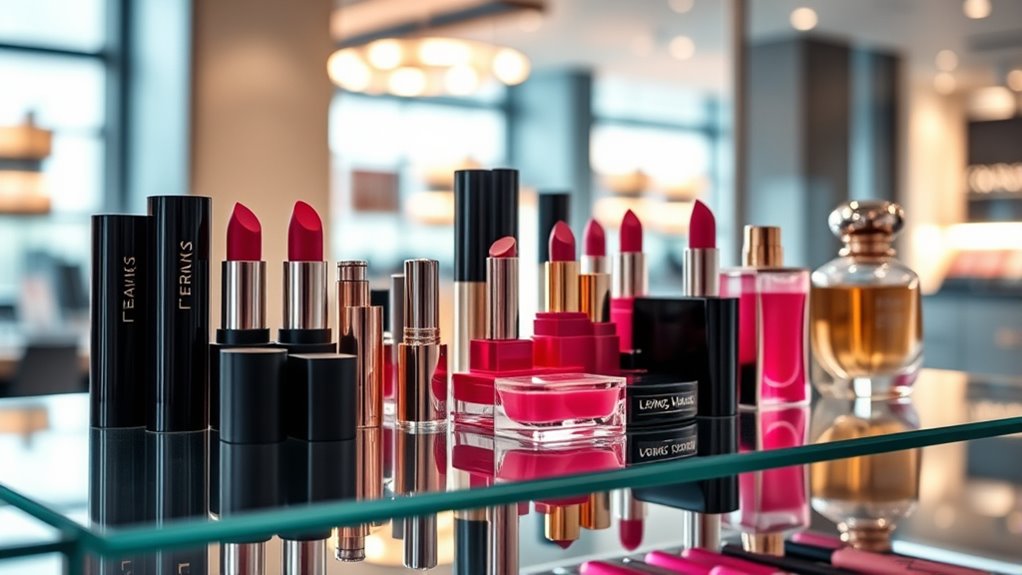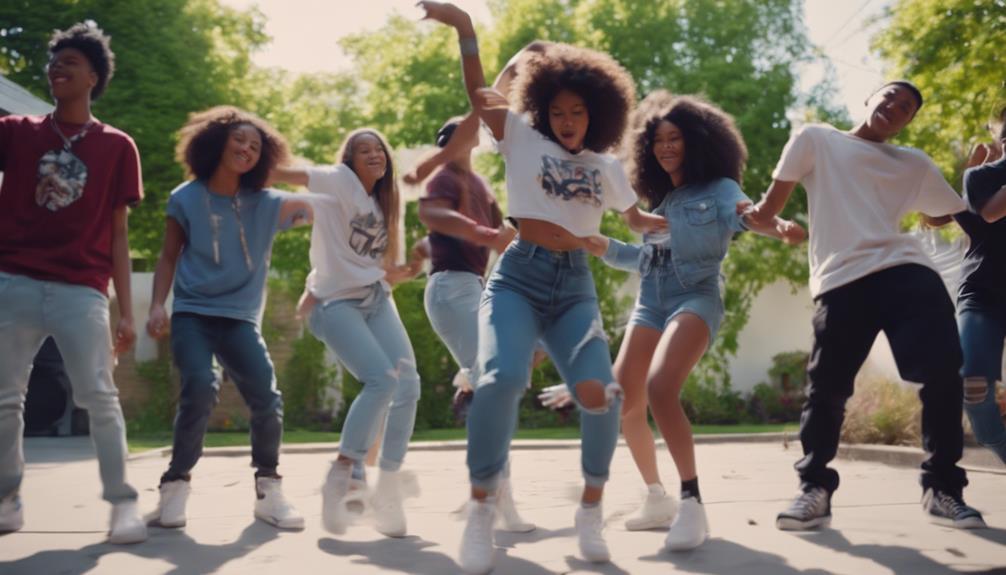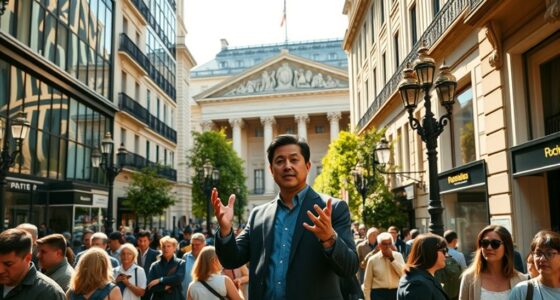Kering sold its beauty division to L’Oréal for USD 4.7 billion, allowing the company to refocus on its core luxury fashion and accessories brands like Gucci and Balenciaga. This strategic move lets Kering streamline operations and reinvest in its flagship brands, while L’Oréal expands its presence in the high-end beauty segment. If you’re curious about how this deal impacts the industry and market dynamics, there’s more to explore below.
Key Takeaways
- Kering sold its beauty division to L’Oréal for USD 4.7 billion, marking a strategic divestment.
- The sale allows Kering to focus on luxury fashion and accessories, reallocating resources accordingly.
- L’Oréal expands its luxury portfolio and market presence through this acquisition of Kering’s beauty brands.
- The deal reflects industry consolidation and a shift towards integrated, high-end beauty offerings.
- Consumers will benefit from enhanced, high-quality products combining L’Oréal’s expertise with Kering’s prestige.

Kering has sold its beauty division to L’Oréal, marking a significant shift in the luxury and cosmetics industries. This move signals Kering’s decision to focus more on its core luxury fashion and accessories businesses, leaving behind its previous venture into cosmetics and fragrances. For you, this means a major change in how Kering allocates its resources and strategic priorities. The $4.7 billion deal allows Kering to streamline its operations, possibly leading to faster growth and more targeted investments in its primary luxury segments like Gucci, Yves Saint Laurent, and Balenciaga.
From L’Oréal’s perspective, acquiring Kering’s beauty division provides an immediate boost to its portfolio, especially in the high-end and luxury segments. You might see this as L’Oréal expanding its reach into the premium beauty market, gaining access to brands and customer bases that previously belonged to Kering. The acquisition is a bold move, positioning L’Oréal as a more formidable player in the luxury cosmetics space. It’s a strategic effort to diversify and strengthen its offerings, appealing to consumers seeking prestige and exclusivity.
This transaction also reflects broader industry trends, where traditional beauty giants are consolidating to better compete against emerging brands and changing consumer preferences. For you, it underscores the importance of adapting to rapidly evolving markets. The deal could lead to innovations in product development, marketing, and distribution, as L’Oréal integrates Kering’s brands into its existing infrastructure. Expect to see new branding initiatives, expanded product lines, and possibly more targeted campaigns aimed at luxury consumers.
Furthermore, this move might influence the competitive landscape, prompting other luxury and cosmetics companies to reconsider their strategies. For consumers like you, it could mean access to more sophisticated, high-quality products that combine L’Oréal’s expertise with the prestige associated with Kering’s brands. The deal also hints at a future where beauty and fashion industries become even more interconnected, with cross-brand collaborations and integrated marketing campaigns becoming the norm.
In essence, this sale is a game-changer. It not only reshapes the future of both companies but also signals a broader shift in the industry’s power dynamics. For you, it’s an indication that the luxury beauty market is evolving rapidly, driven by strategic mergers and acquisitions that aim to keep brands relevant and competitive. As L’Oréal absorbs Kering’s beauty assets, expect to see a new wave of luxury beauty products that reflect the combined strengths of these industry giants.
Frequently Asked Questions
What Brands Were Included in Kering’s Beauty Division?
You’ll find that Kering’s beauty division included prominent brands like Gucci Beauty, Yves Saint Laurent Beauté, and Boucheron Beauty. These brands focus on luxury cosmetics, skincare, and fragrances, appealing to high-end consumers. Kering’s strategic move to sell this division to L’Oréal aimed to concentrate on its core fashion and leather goods. The brands you recognize are known for their elegance and innovation, making them valuable assets in the beauty industry.
How Will This Sale Impact Kering’s Overall Business Strategy?
This sale shifts Kering’s focus toward its core luxury segments, enabling you to streamline operations and boost profitability. With the divestment, you can reallocate resources to strengthen brands like Gucci and Balenciaga, emphasizing innovation and sustainability. It also reduces exposure to the volatile beauty market, helping you build a more resilient business. Overall, you’ll likely see a more targeted strategy that aligns better with long-term growth goals.
What Are L’Oreal’s Plans for Kering’s Beauty Brands?
L’Oréal plans to expand Kering’s beauty brands markedly, aiming to boost their market share in luxury cosmetics by 15% within the next two years. You’ll see more innovation, targeted marketing, and global distribution efforts. L’Oréal’s focus is on leveraging its extensive resources to elevate these brands’ appeal, making them more accessible and competitive worldwide. This move could reshape the luxury beauty landscape, putting Kering’s brands on a faster growth trajectory.
Were There Any Regulatory Hurdles During the Acquisition Process?
Yes, there were some regulatory hurdles during the acquisition process. You might have seen authorities scrutinize the deal for potential market dominance concerns. L’Oreal had to address these issues by providing detailed plans to guarantee fair competition. You’re likely aware that such regulatory reviews are standard for large mergers, and in this case, they were resolved smoothly, allowing the acquisition to proceed without significant delays.
How Will This Sale Affect Employees of Kering’s Beauty Division?
You’ll likely see some changes, but overall, the sale shouldn’t drastically affect employees. About 80% of the staff might experience new opportunities or shifts in roles as L’Oréal integrates the division. Some may face restructuring or relocation, but L’Oréal’s reputation for job stability suggests most will find a smooth progression. Stay alert for updates from management, and consider exploring new roles or training to stay ahead.
Conclusion
So, you see, with Kering’s beauty arm now in L’Oréal’s hands for USD 4.7 billion, the beauty world is changing faster than you can say “Roaring Twenties.” This deal could reshape industry power dynamics, and you’ll want to keep an eye on how brands evolve. It’s like stepping into a new chapter of a novel—full of surprises and opportunities. Expect the unexpected, just like a plot twist in a classic film.










